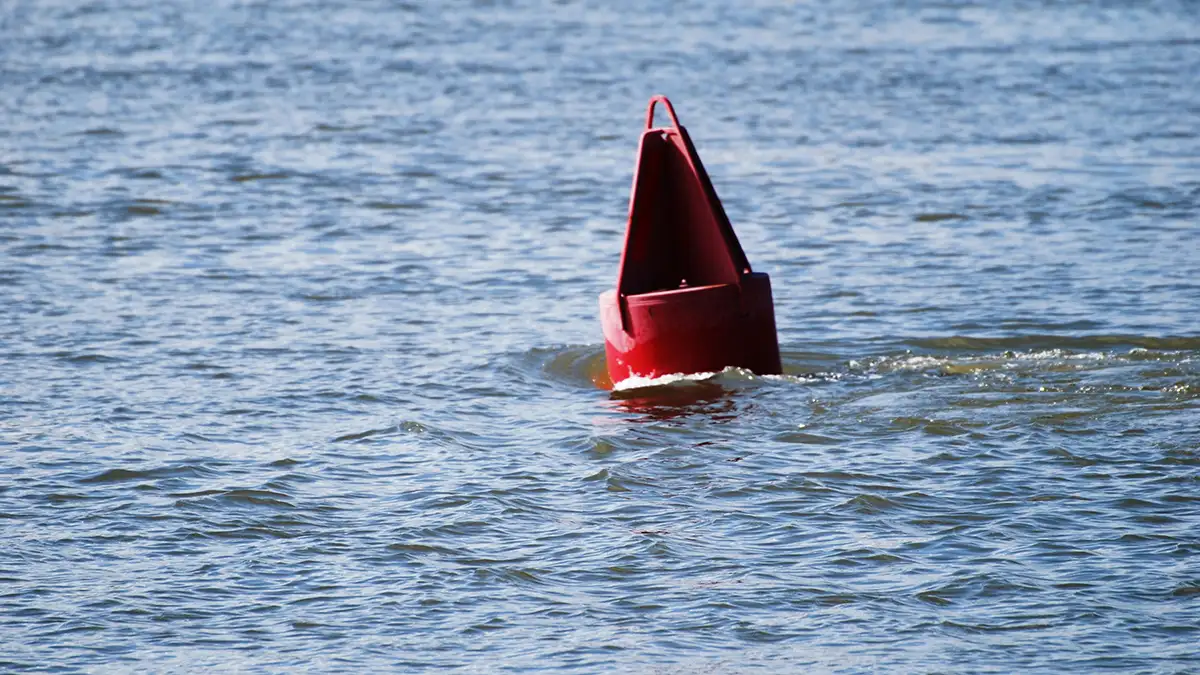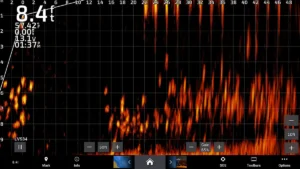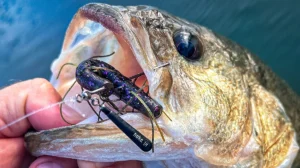Forward facing sonar has undoubtably taken over the world of bass fishing. There has been lots of talk over the last several months about whether or not this technology should be allowed in tournaments due to its effectiveness. While there are many benefits that come with understanding this technology, it can hurt you just as much as it helps you. Knowing when and how to use forward facing sonar is key to finding success with this new equipment. While there are tons of instances where this technology can help you, sometimes it’s better to turn off the screen and get back to the roots of why you love to fish. So I wanted to highlight when to not use forward facing sonar.
IT CAN SPOOK FISH
All transducers whether it be a side scan, down scan or live imaging transducer make sound. These transducers all send out sonar pings which go until they make contact with something, and then send the return back to your fish finder. These sonar pings create a distinct ticking sound that can be heard by both the angler and the fish. This is especially true for anglers that use forward facing sonar. The ticks from these transducers are much louder than that of a traditional 2D transducer.
I’ve noticed that fish closer than 30 feet immediately notice the boats presence and are far more reluctant to bite. I believe this is largely due to these sonar pings and the sound they transmit through the water. With the increased popularity in forward facing sonar, almost every tournament angler is using these transducers. This has quickly educated fish to the sound of this equipment, and I feel that is causing them to be more reluctant to bite. Turning these transducers off is a great way to be more stealthy on the water. I genuinely think it can lead to more bites in certain situations. One of my favorite times to turn off these transducers is when I’m targeting fish on ultra shallow structure.
FISHING SHALLOW
I’m absolutely infatuated with my electronics, and I’ve quickly gained confidence using this technology in the majority of fishing scenarios. I use forward facing sonar in almost any depth greater than 4 feet, however I like to turn this technology off when targeting fish that are shallower than 3 to 4 feet. Turning off your transducers and keeping your trolling motor at a slow speed allows you to get much closer to bass without spooking them. This is essential for fishing shallow cover in tight quarters. Not only does turning off this technology make you more stealthy, but it can also help you focus.
Fishing shallow is a super visual technique. Looking around at various types of cover and making tight accurate casts is crucial for finding success with this technique. Running a shallow water pattern involves identifying types of cover or structure these fish are on, and then hitting similar types of structure all over the lake. I’ve found that looking at forward facing sonar can quickly distract me when I’m trying to practice this technique. You never know where you might get a bite when fishing shallow, so any time spent looking at the screen and not casting will inevitably hurt your performance. One of the most important times to ignore this technology is when you are sight fishing.
SIGHT FISHING
Hence the name, sight fishing involves casting at fish you can physically see with your eyes. This can be anything from shallow cruisers to fish on bed. For similar reasons to shallow fishing, I tend to always turn off all my transducers when targeting these shallow water bass. The noise and sonar pings can disturb these fish and make them aware of your presence. While this style of fishing may seem very different compared to targeting fish on forward facing sonar, I find it to be extremely similar.
The reason forward facing sonar is so productive is because it allows you to consistently cast at fish without wasting any time in dead water. This is similar to sight fishing because you know exactly what you’re casting at. Not only do you know you’re casting at fish, but you can see exactly how they react to your lure. This is one of my all time favorite techniques, and is still a productive way to catch a giant limit of bass without using any technology.
FISHING CURRENT
Fishing in current is another time I like to turn off forward facing sonar. I’ve used this technology many times when fishing beneath a dam or up a river, however I feel that it’s not as productive in these scenarios. One of the reasons I don’t typically use forward facing sonar in heavy current is because it’s hard to see what I’m looking at. The fast moving water tends to distort the image on forward facing sonar, making it much harder to see fish or detail. You can still see the bottom and major structures, however I’ve found it difficult to locate specific fish when the water is moving.
Another reason I don’t use forward facing sonar when fishing current is because this style of fishing is extremely visual. I like to use my eyes to look for current seams, slack water and other irregularities to target. You can’t see any of these changes on forward facing sonar, which makes your eyes far superior to any transducer you might be using. This isn’t to say that this technology cannot be used in these scenarios, I just find them to be far less productive in these types of situations. While I truly love forward facing sonar and recognize the benefits it has to offer, I still enjoy turning off the screen and going back to my roots of bass fishing.
GETTING BACK TO YOUR ROOTS
Even though I love using all the newest technology, I also like to turn off all my electronics and just go fishing. Growing up, I never had any fancy electronics or even a boat for that matter. Every weekend I would travel with my parents to our cabin in the mountains of Tennessee with the purpose of fishing all weekend. I would walk the bank of our little local lake with nothing but a bait caster and a spinning rod. I would sit out there all day catching bass until I was blue in the face. Later in life, I got a kayak to take out on the lake, and even then I was fishing the bank using nothing but my eyes.
This style of fishing is incredibly nostalgic for me, and it’s something I do quite regularly. Something about fishing down the bank while not knowing what’s there brings a sense of mystery that makes feel like I’m 13 years old fishing at my parents cabin again. I’ve also caught some trophy sized bass practicing these shallow water tactics. This is still one of may all time favorite ways to fish, and no matter how advanced electronics get I will still practice these age old methods.
Forward facing sonar undoubtably comes with a wealth of benefits that help anglers catch more and bigger fish. However, just because this technology is extremely helpful doesn’t mean you always have to use it. This technology allows us to target fish in ways that were never before possible, however it doesn’t take away from the classic techniques angler have used to catch bass for years. While using forward facing sonar can help you catch fish, sometimes it’s better to turn off the screen and just go fishing.







![[VIDEO] How Brandon Palaniuk Uses the One-Boat Network App](https://www.wired2fish.com/wp-content/uploads/2025/06/one-boat-network-300x169.webp)
![[VIDEO] How to Install the Garmin Force Pro Trolling Motor](https://www.wired2fish.com/wp-content/uploads/2025/06/trolling-motor-install-300x169.webp)
![[VIDEO] Multi-Species Mission with the Garmin Force Pro](https://www.wired2fish.com/wp-content/uploads/2025/06/stanley-force-pro-300x169.webp)











